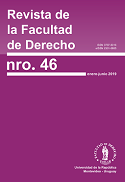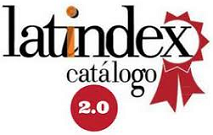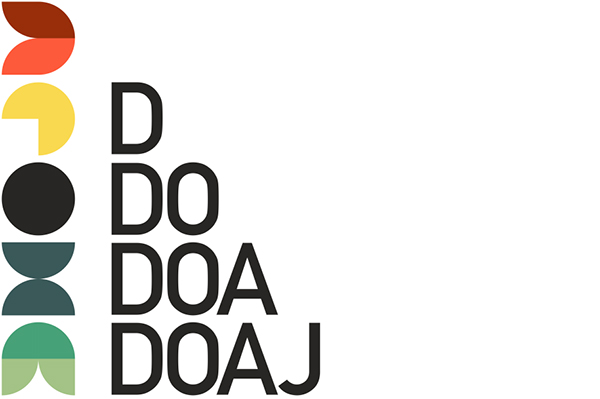El ánimo de lucro en el delito de tráfico de migrantes
análisis crítico de la legislación europea
Resumen
El presente artículo analiza críticamente la legislación europea sobre tráfico de migrantes. Según la tesis del autor, el legislador europeo, así como la mayoría de los países miembros de la Unión Europea, han confundido este específico delito, regulado a nivel internacional por la Convención de Palermo, con la figura de facilitación de la inmigración irregular. Esta indebida superposición entre los diversos tipos penales genera múltiples y complejos problemas. En la primera parte del artículo se analizan los requisitos del delito de tráfico de migrantes en el derecho internacional, con particular referencia al ánimo de lucro. En la segunda parte se evidencian las razones por las cuales no es posible concebir este tipo penal como equivalente funcional del delito de favorecimiento de la inmigración irregular. Como conclusión, el artículo propone la adopción de un modelo que distinga claramente los elementos constitutivos de las dos figuras delictivas y sus respectivos campos de aplicación.
Descargas
Citas
Aljehani, A. (2015). The Legal Definition of the Smuggling of Migrants in Light of the Provisions of the Migrant Smuggling Protocol. Journal of Criminal Law, 79(2), 122-137.
Allsopp, J. (2016). The European Facilitation Directive and the Criminalisation of Humanitarian Assistance to Irregular Migrants: Measuring the impact on the whole community. En S. Carrera, E. Guild, Irregular Migration, Trafficking and Smuggling of Human Beings. Policy Dilemmas in the EU (pp. 47-56). Bruselas: Centre for European Policy Studies.
Allsopp, J. y Manieri, M. G. (2016). The EU Anti-smuggling Framework: Direct and Indirect Effects on the Provision of Humanitarian Assistance to Irregular Migrants. En S. Carrera, E. Guild, Irregular Migration, Trafficking and Smuggling of Human Beings. Policy Dilemmas in the EU (pp. 81-91). Bruselas: Centre for European Policy Studies.
Antonopoulos, G. y Winterdyk, J. (2006). The Smuggling of Migrants in Greece: An Examination of its Social Organization. European Journal of Criminology, 3(4), 439-461.
Attard, F. (2016). Is the Smuggling Protocol a Viable Solution to the Contemporary Problem of Human Smuggling on the High Seas? Journal of Maritime Law & Commerce, 47(2), 219-248.
Daunis, A. (2010). Sobre la urgente necesidad de una tipificación autónoma e independiente de la trata de personas. Indret: Revista para el Análisis del Derecho, (1), 1-44.
EUROPOL (2016). Migrant Smuggling in the EU.
Gallagher, A. (2001). Human Rights and the New UN Protocols on Trafficking and Migrant Smuggling: A Preliminary Analysis. Human Rights Quarterly, 23(4), 975-1004.
García, B. (2005). La pretendida protección jurídico-penal de los inmigrantes en el artículo 318 bis del Código Penal. Anuario de Derecho Penal y Ciencias Penales, 58(3), 837-886.
Hartati, A. (2013). Criminalization of the Smuggling of Migrants in Accordance with the United Nations Convention against Transnational Organized Crime and Protocol against the Smuggling of Migrants by Land, Sea and Air. Indonesian Journal of International Law, 11(1), 19-48.
Krieg, S. (2009). Trafficking in Human Beings: The EU Approach between Border Control, Law Enforcement and Human Rights. European Law Journal, 15(6), 775-790.
Laurenzo, P. (2003). La protección penal de los derechos de los ciudadanos extranjeros. Revista de Derecho Penal y Criminología, (12), 63-93.
Martínez, M. (2008). ¿Puede utilizarse el derecho penal en la lucha contra la inmigración irregular? Revista Electrónica de Ciencia Penal y Criminología, (10), 1-20.
Mayordomo, V. (2011). Nueva Regulación de la Trata, el Tráfico Ilegal y la Inmigración Clandestina de Personas. Estudios Penales y Criminológicos, (31), 325-390.
Muñoz, J. (2016). La ayuda humanitaria: ¿Una excusa absolutoria o una causa de justificación? Revista Electrónica de Ciencia Penal y Criminología, (18), 1-27.
Obokata, T. (2005). Smuggling of Human Beings from a Human Rights Perspective: Obligations of Non-State and State Actors under International Human Rights Law. International Journal of Refugee Law, 17(2), 394-415.
Pelissero, M. (2013). Le ipotesi di favoreggiamento dell’immigrazione clandestina. En E. Rosi, F. Rocchi, Immigrazione illegale e diritto penale. Un approccio interdisciplinare (pp. 169-184). Nápoles: Jovene editore.
Spena, A. (2016). Human smuggling and irregular immigration in the EU: from complicity to exploitation? En S. Carrera, E. Guild, Irregular Migration, Trafficking and Smuggling of Human Beings. Policy Dilemmas in the EU (pp. 33-40). Bruselas: Centre for European Policy Studies.
UNODC (2010). Organized crime involvement in trafficking in persons and smuggling of migrants.
UNODC (2013). Corruption and the Smuggling of Migrants.
UNODC (2017). The Concept of “Financial or Other Material Benefit” in the Smuggling of Migrants Protocol.
UNODC (2018). Global Study on Smuggling of Migrants.
Normas:
Convención de las Naciones Unidas en contra de la Criminalidad Organizada Transnacional y sus Protocolos. Acordada en diciembre de 2000.
Convenio de Aplicación del Acuerdo de Schengen de 14 de junio de 1985. Acordado en junio de 1990.
Consejo de la Unión Europea. Directiva 2002/90, destinada a definir la ayuda a la entrada, a la circulación y a la estancia irregulares. Diario Oficial de las Comunidades Europeas, 28 noviembre de 2002.
Consejo de la Unión Europea. Decisión Marco 2002/946, destinada a reforzar el marco penal para la represión de la ayuda a la entrada, a la circulación y a la estancia irregulares. Diario Oficial de las Comunidades Europeas, 28 noviembre de 2002
Argentina. Ley N° 25.871, Ley de Migraciones. Boletín Oficial, 20 enero de 2004.
Bélgica. Loi du 15 décembre 1980 sur l'accès au territoire, le séjour, l'établissement et l'éloignement des étrangers Moniteur Belge, 15 diciembre de 1980.
Chile. Código Penal. Diario Oficial, 12 noviembre de 1874.
Colombia. Ley N° 599 de 2000, Código Penal. Diario Oficial, 24 julio de 2000.
España. Ley Orgánica 10/1995, Código Penal. Boletín Oficial del Estado, 23 noviembre de 1995.
Francia. Code de l'entrée et du séjour des étrangers et du droit d'asile. Journal officiel de la République française, 25 noviembre de 2004.
Italia. Decreto legislativo Nº 286, Testo unico sull'immigrazione. Gazzetta Ufficiale, 25 julio de 1998.
Italia. Ley Nº 354, Ordinamento penitenziario. Gazzetta Ufficiale, 26 julio de 1975.
Perú. Decreto Legislativo N° 635, Código Penal. Diario Oficial, 08 abril de 1991.
Uruguay. Ley N° 18.250, Migración. Diario Oficial, 17 enero de 2008.
Derechos de autor 2019 Revista de la Facultad de Derecho

Esta obra está bajo licencia internacional Creative Commons Reconocimiento 4.0.
Los autores conservan sus derechos de autor y ceden a la revista el derecho de primera publicación de su obra, el cuál estará simultaneamente sujeto a la licencia Creative Commons Reconocimiento 4.0 Internacional License. que permite compartir la obra siempre que se indique la publicación inicial en esta revista.












